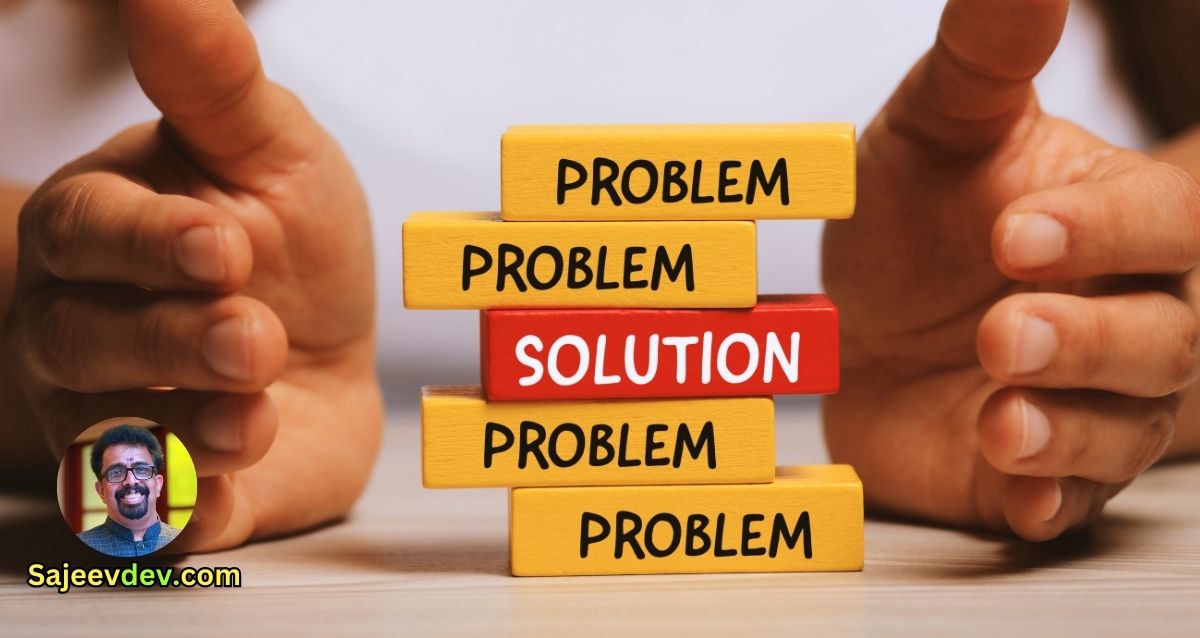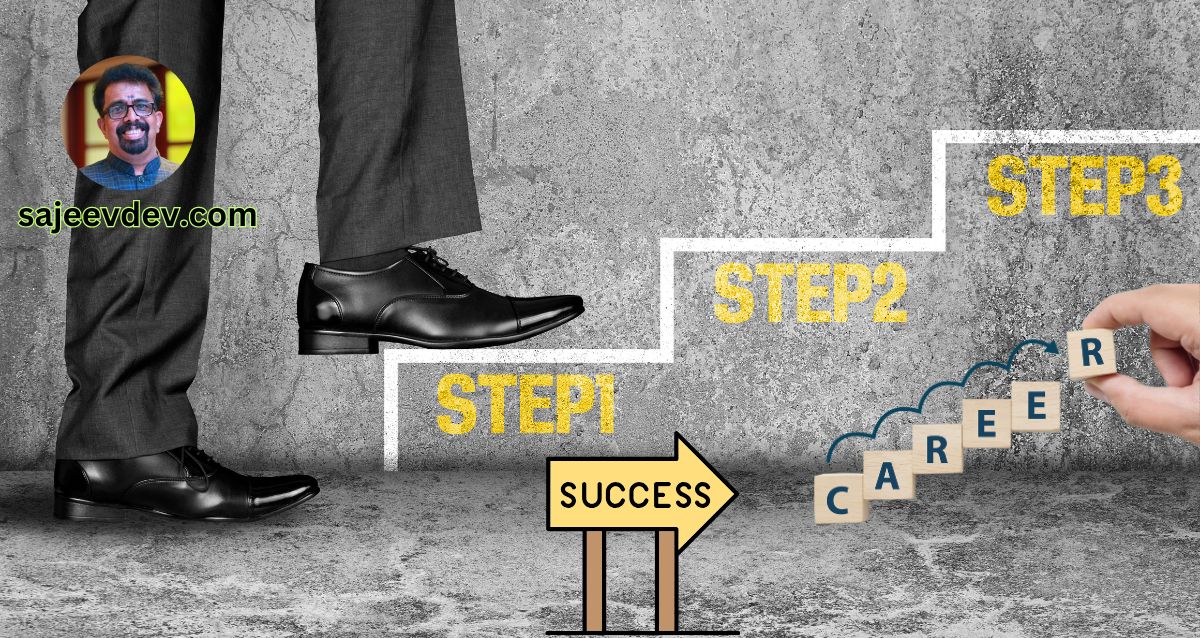The Power of a Solution-Oriented Mindset
In today’s fast-paced world, challenges and obstacles are inevitable. However, the way we approach these hurdles significantly impacts our ability to overcome them. A solution-oriented mindset, which focuses on finding solutions rather than dwelling on problems, can be a powerful tool for empowerment and optimism. By shifting our perspective, we can transform challenges into opportunities for growth and innovation.
This article delves into the concept of a solution-focused mindset, exploring its numerous benefits and practical applications. We will examine how this approach can enhance problem-solving skills, boost resilience, and foster a positive outlook. Additionally, we will provide strategies for cultivating a solution-oriented mindset, enabling you to navigate life’s complexities with greater ease and confidence.
The benefits of adopting a solution-focused approach are manifold. It encourages proactive thinking, enabling individuals to identify actionable steps towards resolution. This mindset also helps in maintaining emotional balance, as it shifts attention away from negative aspects and towards constructive outcomes. Moreover, a solution-oriented approach can improve collaboration and communication, as it promotes a shared goal of finding effective resolutions.
Throughout this article, we will explore various techniques to develop and strengthen a solution-oriented mindset. From reframing challenges to leveraging strengths, these strategies will equip you with the tools needed to tackle obstacles head-on. By embracing a solution-focused perspective, you can unlock your potential to overcome difficulties and achieve your goals.
Identifying the Problem: Understanding the Challenge at Hand
Before embarking on the journey to find solutions, it is crucial to first identify and understand the problem at hand. A thorough understanding of the challenge is essential for developing effective and sustainable solutions. This initial step ensures that efforts are directed toward the root cause rather than just addressing symptoms.
Accurately pinpointing the issue begins with clearly defining the problem. This can involve asking fundamental questions such as: What is the nature of the problem? Who or what is affected by it? When and where does the problem occur? Why does it happen? Answering these questions helps in framing the problem comprehensively, providing a clear picture that guides further analysis.
Another important aspect is gathering relevant data and information. This can be achieved through various means such as observations, surveys, interviews, and reviewing existing documentation. Data collection provides evidence that supports the problem definition and highlights patterns or trends that might not be immediately apparent.
Engaging stakeholders who are impacted by the problem can also offer invaluable insights. These individuals often possess firsthand knowledge and experiences that can reveal underlying issues and contribute to a more nuanced understanding. Their perspectives are essential in ensuring that the identified problem is accurate and comprehensive.
Additionally, utilizing analytical tools and techniques can aid in dissecting the problem. Methods like root cause analysis, SWOT analysis (Strengths, Weaknesses, Opportunities, Threats), and the 5 Whys technique can be instrumental in breaking down the problem into manageable components and identifying its core causes.
By investing time and effort into understanding the challenge thoroughly, one can develop solutions that are not only effective but also tailored to the specific context of the problem. This foundational step sets the stage for a strategic approach to problem-solving, ensuring that subsequent efforts yield meaningful and lasting results.
The Role of Attitude: How Optimism Drives Solutions
An optimistic attitude plays a crucial role in problem-solving and overcoming challenges. This mindset shapes our perceptions and responses, significantly impacting our ability to find effective solutions. Psychological research underscores the myriad benefits of optimism, including enhanced creativity, increased resilience, and improved problem-solving skills. Optimism fosters a sense of possibility, which in turn encourages individuals to explore innovative approaches and persevere through difficulties.
One of the key psychological benefits of optimism is its impact on creativity. When we maintain a positive outlook, our minds are more open to new ideas and perspectives. This flexibility allows us to entertain a broader range of potential solutions, enhancing our ability to think outside the box. For instance, in business environments, leaders who exhibit optimism are often better at inspiring their teams to devise creative strategies for overcoming market challenges.
Moreover, an optimistic mindset boosts resourcefulness, another critical component of effective problem-solving. Optimists are more likely to view obstacles as opportunities for growth rather than insurmountable barriers. This perspective encourages persistence and adaptability, essential traits for navigating complex issues. For example, during the early stages of the COVID-19 pandemic, many companies with optimistic leadership successfully pivoted their business models to meet new demands, demonstrating remarkable ingenuity and resilience.
Historical and contemporary examples illustrate the power of optimism in driving solutions. Consider the case of Thomas Edison, whose optimistic attitude was instrumental in his numerous inventions. Despite experiencing countless failures, his unwavering belief in eventual success led to groundbreaking innovations like the electric light bulb. In a more recent context, the global effort to develop COVID-19 vaccines was fueled by the optimism of scientists and researchers who believed in their ability to tackle an unprecedented challenge.
Ultimately, fostering an optimistic mindset can significantly enhance our problem-solving capabilities. By embracing positivity, we not only improve our mental well-being but also empower ourselves to navigate life’s challenges with greater creativity and resourcefulness.
Brainstorming Solutions: Techniques and Strategies
When faced with challenges, it is crucial to adopt effective brainstorming techniques to generate a variety of potential solutions. Among the most widely recognized methods is mind mapping. This technique involves creating a visual representation of ideas, starting with a central problem and branching out into various related concepts and thoughts. Mind mapping not only helps in organizing thoughts but also fosters creativity by visually connecting disparate ideas.
Another powerful approach is the Six Thinking Hats method, developed by Edward de Bono. This technique encourages participants to look at problems from six different perspectives, represented by colored hats: White (facts and information), Red (emotions and intuition), Black (caution and critical judgment), Yellow (optimism and benefits), Green (creativity and new ideas), and Blue (process control and organization). By systematically exploring these different viewpoints, teams can uncover a fuller range of solutions and anticipate potential obstacles.
The SCAMPER technique is also highly effective for brainstorming. SCAMPER stands for Substitute, Combine, Adapt, Modify, Put to another use, Eliminate, and Reverse. This method prompts individuals to think about how they can alter existing solutions or ideas in creative ways. For example, by asking how a component could be substituted or combined with another, one might uncover innovative and practical solutions that were not initially apparent.
Incorporating these techniques into your brainstorming sessions can significantly enhance the quality and quantity of solutions generated. It is essential to encourage an open-minded approach, allowing all ideas to be considered without immediate judgment. This fosters an environment where creativity can flourish, leading to more robust and well-rounded solutions.
Ultimately, the goal of brainstorming is to explore all possible avenues and generate a wide array of ideas. By utilizing techniques like mind mapping, the Six Thinking Hats, and SCAMPER, individuals and teams can effectively shift their mindset towards solution-oriented thinking, thereby overcoming challenges more efficiently.
Evaluating and Selecting the Best Solution
Once a variety of potential solutions have been generated during the brainstorming phase, it is essential to evaluate each option systematically to identify the most effective one. This evaluation process involves a thorough analysis of several criteria, including feasibility, impact, and resources required. By carefully assessing these factors, decision-makers can make an informed choice, thereby enhancing the likelihood of successful implementation.
Feasibility is a critical criterion in the evaluation process. It involves examining whether a solution is practical and can be realistically implemented within the given constraints. This includes considering the technical, financial, and time-related aspects. Solutions that are overly complex or require resources beyond the organization’s capacity may not be feasible, despite their potential benefits.
Impact refers to the effect that the solution will have once implemented. This includes both the immediate and long-term consequences. A high-impact solution can significantly address the core issues and provide substantial benefits. It is also important to consider any potential negative impacts and weigh them against the positive outcomes. Solutions with a higher positive impact and minimal drawbacks should be prioritized.
Resource requirements encompass the human, financial, and material resources needed to implement the solution. Evaluating resource requirements helps in identifying whether the necessary resources are available and if the cost of implementation is justified by the expected benefits. Solutions that demand excessive or scarce resources may not be viable, even if they promise high impact.
To make an informed decision, it is advisable to use decision-making tools such as cost-benefit analysis, SWOT analysis, or decision matrices. These tools provide a structured approach to comparing different solutions based on the key criteria. Additionally, involving stakeholders in the evaluation process can provide valuable insights and promote buy-in, which is crucial for successful implementation.
Common pitfalls to avoid during the evaluation process include over-reliance on intuition, neglecting to consider alternative solutions, and failing to account for long-term implications. By adopting a systematic and objective approach, decision-makers can select the best solution that aligns with their goals and resources.
Implementing the Solution: Taking Action
Once a solution has been identified, the next crucial step is to implement it effectively. This phase demands a well-structured action plan that outlines each step necessary to achieve the desired outcome. Developing a detailed plan is essential for maintaining focus and ensuring that all aspects of the solution are addressed systematically. This plan should clearly define tasks, assign responsibilities, and establish timelines to track progress effectively.
Setting realistic goals is another pivotal element in the implementation process. Goals should be specific, measurable, achievable, relevant, and time-bound (SMART). By setting SMART goals, individuals and teams can break down the solution into manageable tasks, making it easier to monitor progress and stay on track. Achieving smaller milestones along the way can boost motivation and build momentum, making the larger objective seem more attainable.
Effective resource allocation is also critical during implementation. Resources may include time, money, personnel, and materials. Prioritizing these resources based on their importance and availability can help prevent bottlenecks and ensure that the solution is implemented smoothly. It’s advisable to regularly review resource allocation and make adjustments as needed to address any unforeseen challenges or changes in circumstances.
Staying focused and motivated throughout the implementation phase can be challenging but is essential for success. Regular progress reviews and adjustments to the action plan can help maintain momentum. Celebrating small victories and recognizing achievements can also keep morale high. Additionally, maintaining clear communication within the team ensures that everyone is aligned and working towards the same objectives.
By creating a detailed action plan, setting realistic goals, and allocating resources effectively, individuals and teams can enhance their chances of successfully implementing their chosen solutions. Staying focused and motivated throughout the process is key to overcoming challenges and achieving the desired outcomes.
Monitoring Progress and Adjusting as Needed
Monitoring progress is a crucial component in effectively overcoming challenges. By tracking your advancement, you gain insights into what is working and what may need modification. This continuous evaluation helps maintain focus on solutions and ensures that efforts are aligned with the ultimate goal. Establishing clear milestones is one effective method for tracking progress. These milestones serve as benchmarks, indicating significant points of achievement along the journey. Regular check-ins, whether weekly, bi-weekly, or monthly, provide opportunities to assess these milestones and gauge overall progress.
Another effective approach is to utilize progress tracking tools, such as project management software or simple spreadsheets, which can help visualize progress and keep all tasks organized. These tools often come with features like timelines, task assignments, and progress indicators, making it easier to stay on track. Regular feedback sessions with team members or stakeholders can also be invaluable. These sessions provide a platform for discussing what is going well and identifying areas that may require adjustments.
Flexibility is key when it comes to making adjustments. Recognizing when changes are needed often involves paying attention to certain indicators, such as stagnation in progress, recurring obstacles, or feedback from those involved. It is essential to approach these indicators with an open mind and a willingness to adapt. Implementing changes might involve reallocating resources, altering strategies, or even revisiting the initial goals and expectations.
To effectively implement adjustments, clear communication is paramount. Ensure that all involved parties understand the reasons for changes and how these adjustments will be executed. This transparency helps in maintaining trust and cooperation within the team. Additionally, documenting the changes and their outcomes can provide valuable insights for future projects or challenges.
In essence, the practice of monitoring progress and making necessary adjustments is a dynamic process that requires vigilance, flexibility, and effective communication. By staying proactive and responsive, you can navigate challenges more efficiently and keep the focus on solutions that lead to successful outcomes.
Reflecting on the Experience: Learning and Growing
Engaging in the problem-solving process provides a unique opportunity for introspection and growth. Reflecting on your experiences allows you to critically evaluate your approaches and outcomes, fostering a mindset of continuous improvement. Embracing each challenge as a learning opportunity can significantly contribute to both personal and professional development.
Consider these questions for self-reflection: What strategies did you employ to tackle the challenge? Were these strategies effective, and if not, what alternative approaches could you have considered? Did you seek feedback from others, and how did that influence your problem-solving process? By honestly answering these questions, you can identify patterns in your problem-solving methods and recognize areas for enhancement.
Continuous improvement is a cornerstone of growth. Each challenge faced is a stepping stone towards a more refined skill set. By actively engaging in self-reflection, you can pinpoint specific skills or knowledge areas that need strengthening. For instance, if you discovered that your time management skills were lacking, you might focus on developing better planning and organizational techniques for future endeavors.
Applying the lessons learned from past challenges to future situations is crucial. One effective approach is to document your problem-solving experiences. Keeping a reflective journal or a digital log can help you track your progress over time and serve as a valuable resource when faced with new challenges. This practice not only reinforces the lessons learned but also builds a repository of strategies that can be revisited and refined.
Ultimately, the process of reflecting on and learning from challenges fosters resilience and adaptability. By viewing each obstacle as an opportunity for growth, you cultivate a proactive mindset that is essential for overcoming future hurdles. Remember, the goal is not to avoid challenges but to equip yourself with the tools and insights needed to navigate them successfully.



